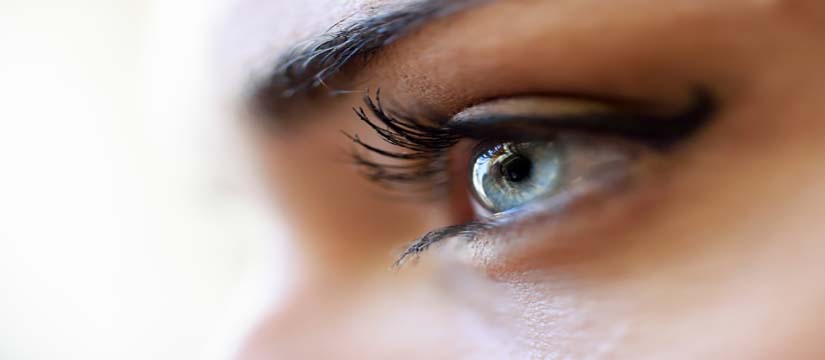
Seven Things Your Teeth Say About Your Health
Some messages coming out of your mouth bypass the vocal chords. Turns out that your teeth, gums, and surrounding tissues also have plenty to say — about your overall health.
“Your mouth is connected to the rest of your body,” says Anthony Iacopino, dean of the University of Manitoba Faculty of Dentistry and a spokesperson for the American Dental Association. “What we see in the mouth can have a significant effect on other organ systems and processes in the body. And the reverse is also true: Things that are going on systemically in the body can manifest in the mouth.”
So stay attuned to the following warning messages, and have worrisome symptoms checked out by a dentist or doctor.
Dental warning #1: Flat, worn teeth plus headache
Sign of: Big-time stress
Many people are surprised to learn they’re tooth-grinders. After all, they do this in their sleep, when they’re not aware of it. And they underestimate the physical toll that stress can place on the body. “Crunching and grinding the teeth at night during sleep is a common sign of emotional or psychological stress,” says Iacopino.
You can sometimes see the flatness on your own teeth, or feel it with the tongue. Or the jaw may ache from the clenching.
What else to look for: Headaches, which are caused by spasms in the muscles doing the grinding. Sometimes the pain can radiate from the mouth and head down to the neck and upper back, Iacopino says. Mouth guards used at night can relieve the symptoms and protect teeth.
Dental warning #2: Cracking, crumbling teeth
Sign of: Gastroesophageal reflux disease (GERD)
Older adults, especially, are vulnerable to teeth that appear to be cracking or crumbling away. The enamel becomes thin and almost translucent. But this erosion isn’t a normal consequence of aging. In fact, it can happen at any age.
Disintegrating teeth are usually caused by acid that’s coming up from the stomach and dissolving them, Iacopino says. The cause: Gastroesophageal reflux disease (GERD, also called acid reflux disease). GERD causes stomach acid to back up into the esophagus — and from there, it’s a short distance to the mouth for some of the damaging acid. GERD is a chronic disorder caused by damage or other changes to the natural barrier between the stomach and the esophagus.
What else to look for: Dry mouth and heartburn are related GERD symptoms. (But in an older adult in someone else’s care — in a nursing home, for example — these complaints may go unreported.) Cracking or chipping teeth in a younger person is also a telltale sign of bulimia, the eating disorder in which the sufferer causes herself (or himself) to vomit before digesting. Same net result: Stomach acid washes up into the mouth, over time disintegrating the tooth enamel.
Dental warning #3: Sores that won’t go away
Sign of: Oral cancer
Many people bite the insides of their mouth as a nervous habit. Others sometimes bite the gum accidentally, creating a sore. But when an open sore in the mouth doesn’t go away within a week or two, it always warrants showing to a dentist or doctor. “We all injure our oral tissues, but if an area persists in being white or red rather than the normal healthy pink, this needs to be evaluated to rule out oral cancer,” says Susan Hyde, an associate professor of clinical dentistry at the University of California, San Francisco, School of Dentistry.
More than 21,000 men and 9,000 women a year are diagnosed with oral cancer, according to the National Cancer Institute. Most are over age 60. Oral cancer has a survival rate of only 35 percent, Iacopino says, but this is mainly because cases are often detected too late. Smokers are six times more likely to develop oral cancer, but one in four oral cancers develop in non-smokers.
What else to look for: Suspicious oral ulcers tend to be raised sores and often have red or white (or red and white) borders. They may lurk underneath the tongue, where they’re hard to see. Bleeding and numbness are other signs, but sometimes the only sign is a sore that doesn’t seem to go away. A biopsy usually follows a visual check.
Dental warning #4: Gums growing over teeth
Sign of: Medication problems
If you notice your gum literally growing over your tooth, and you’re taking a medication for heart disease or seizures or you take drugs to suppress your immune system (such as before a transplant), it’s well worth mentioning this curious development to your prescribing doctor.
“A swelling of the gums to where it grows over the teeth is a sign the dosage or the medication need to be adjusted,” the ADA’s Anthony Iacopino says. Certain drugs can stimulate the growth of gum tissue. This can make it hard to brush and floss, inviting tooth decay and periodontal disease.
What else to look for: The overgrowth can cause an uncomfortable sensation. In extreme cases, the entire tooth can be covered.
Dental warning #5: Dry mouth
Sign of: Sjogren’s syndrome, diabetes
Many things can cause dry mouth, from dehydration and allergies to smoking and new medications. (In fact, hundreds of drugs list dry mouth as a side effect, including those to treat depression and incontinence, muscle relaxants, antianxiety agents, and antihistamines.) But a lack of sufficient saliva is also an early warning of two autoimmune diseases unrelated to medicine use: Sjogren’s syndrome and diabetes.
In Sjogren’s, the white blood cells of the body attack their moisture-producing glands, for unknown reasons. Four million Americans have Sjogren’s, 90 percent of them women. Twenty-four million people in the U.S. have type 1 or type 2 diabetes, a metabolic disease caused by high blood sugar.
What else to look for: Other signs of diabetes include excessive thirst, tingling in the hands and feet, frequent urination, blurred vision, and weight loss. In Sjogren’s, the eyes are dry as well as the mouth, but the entire body is affected by the disorder. Because its symptoms mimic other diseases (such as diabetes), people are often misdiagnosed and go several years before being properly diagnosed.
Dental warning #6: White webbing inside cheeks
Sign of: Lichen planus
The last thing you might expect to discover while brushing your teeth is a skin disease. But it happens. Lichen planus, whose cause is unknown, is a mild disorder that tends to strike both men and women ages 30 to 70. The mucus membranes in the mouth are often a first target.
Oral lichen planus looks like a whitish, lacy pattern on the insides of the cheeks. (The name comes from the same roots as tree lichen, a lichen that has a similar webbed, bumpy appearance.) Seventy percent of lesions appear in the mouth before they strike other parts of the body, says professor Anthony Iacopino.
What else to look for: Another common area where a lichen planus rash may appear is the vagina. Lichen planus often goes away on its own, but sometimes treatment is necessary.
Dental warning #7: Crusting dentures
Sign of: Potential aspiration pneumonia
Most people don’t connect dentures (false teeth) with pneumonia, other than to think they’re both words that often refer to the world of the elderly. And yet the two have a potentially deadly connection.
“A leading cause of death in older people is aspiration pneumonia, often from inhaling debris around the teeth and dentures,” Iacopino says.
In aspiration pneumonia, foreign material is breathed into the lungs and airway, causing dangerous (even fatal) inflammation. Too often, the problem stems from people in the care of others — those in nursing homes, for example — who fail to clean dentures properly. Dentures need to be removed daily from the mouth, cleaned with a special brush, and stored in a cleansing solution.
What else to look for: A soft, crusty material developing around dentures. With proper cleaning, though, you don’t have to worry about other red flags. “It’s amazing. You can get a 100-percent reduction in what’s otherwise a leading cause of death for denture wearers,” Iacopino says.
Source: https://www.caring.com/articles/7-things-teeth-say-about-health



